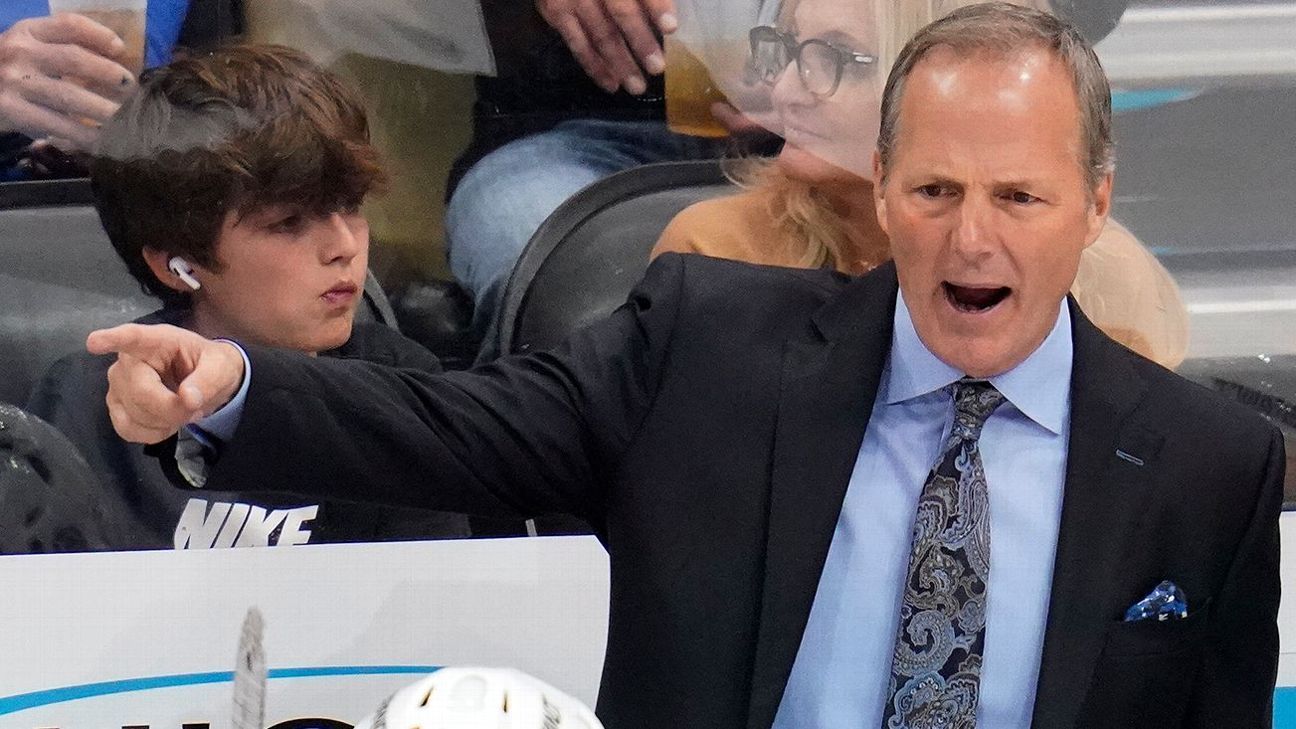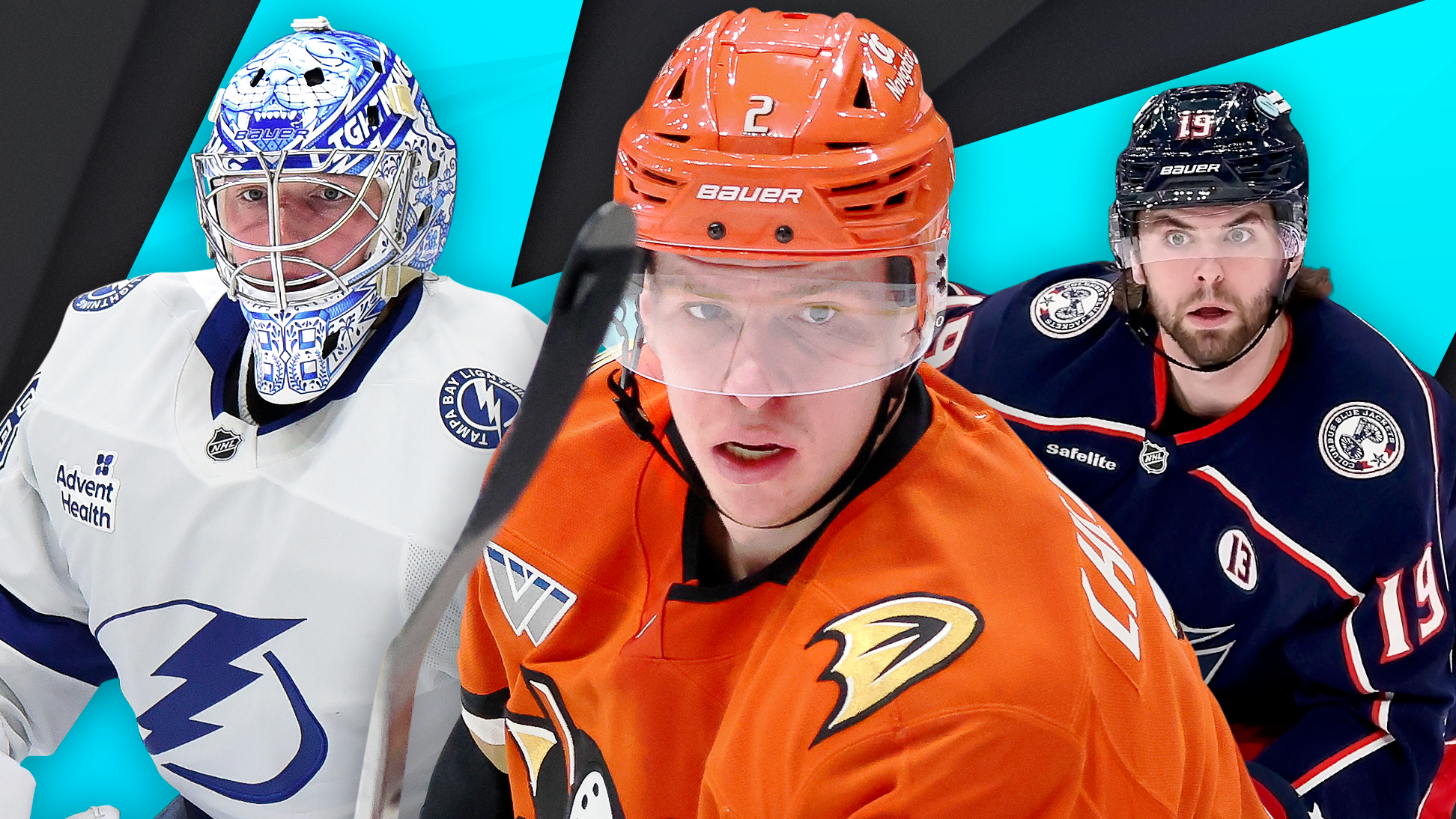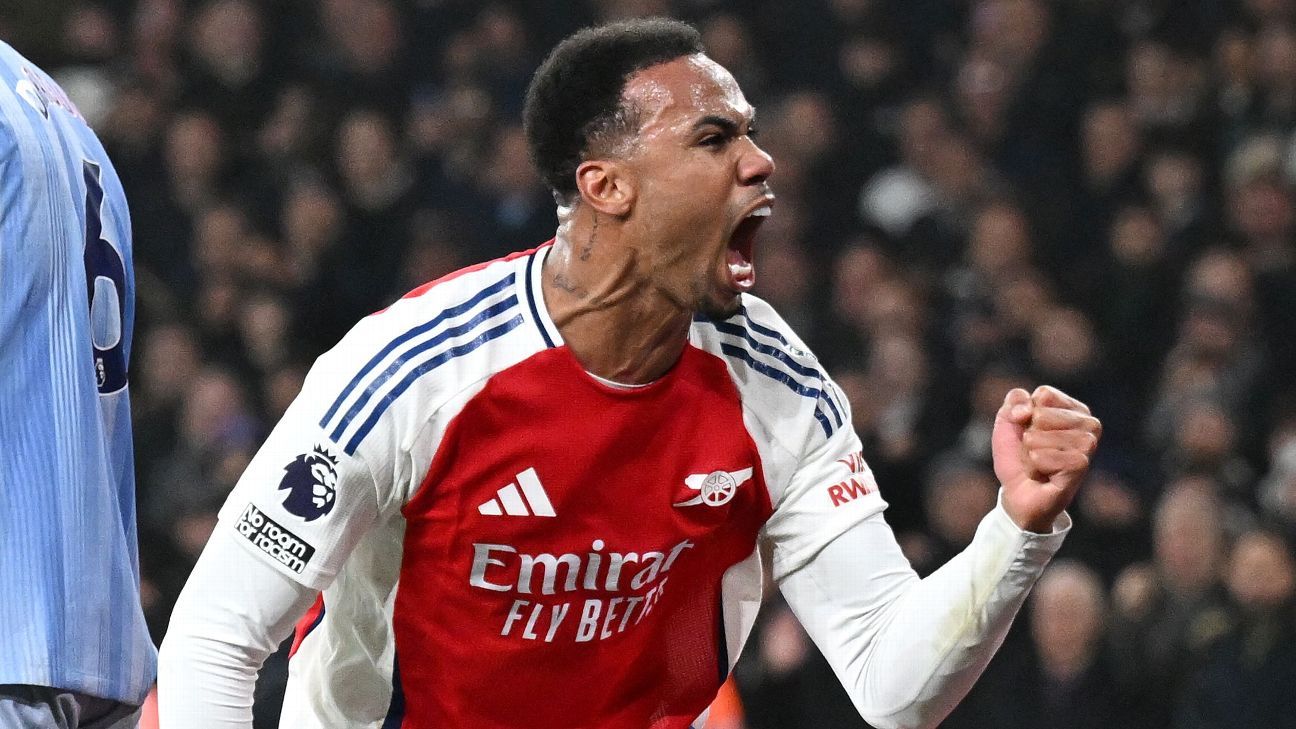
Matt BowenMay 2, 2025, 07:26 AM ET
- Matt Bowen is a fantasy football and NFL writer for ESPN. He joined ESPN in 2015, writes regularly for ESPN+ and spent multiple years on "NFL Matchup." After graduating from the University of Iowa, Matt played safety in the NFL for St. Louis, Green Bay, Washington and Buffalo over seven seasons.
Every year, the NFL draft ushers new talent into the league, which provides fantasy football managers new names to speculate on. The potential these players possess and when they are expected to receive the opportunity to produce is what separates the rookies you should consider drafting from those you will need to be more patient with.
This year's draft wasn't as star-studded on offense in the early rounds like last year's was, particularly at quarterback, but there was quality depth at running back, wide receiver and tight end throughout. Here are the top players who are in position to produce viable numbers in redraft leagues of varying sizes, followed by those best viewed as dynasty targets.
Redraft leagues
Quarterbacks
A big-arm thrower with movement skills and the creativity to work outside of structure, Ward is a solid fit for the Titans' offense. Ward has a top target in receiver Calvin Ridley, tight end Chig Okonkwo can produce after the catch and the team signed veteran Tyler Lockett. Plus, there is a dual-threat element with backs Tony Pollard and Tyjae Spears. Yes, Ward will have to play with more rhythm as a pro passer, but he has starting value in 2QB/superflex formats with the ability to climb the QB2 ranks.
Running backs
Ashton Jeanty, Las Vegas Raiders
A difference-maker with home run ability and elite contact balance, Jeanty steps into the lead role in the Raiders backfield under offensive coordinator Chip Kelly. In his final season at Boise State, Jeanty's 2,601 rushing yards and 126 forced missed tackles led the country, and he should see consistent usage as a receiver on backfield releases. Given his high-end traits and the anticipated weekly volume in Vegas, Jeanty is in a position to produce RB1 numbers as a rookie.
Quinshon Judkins, Cleveland Browns
Judkins is a physical runner who can drop the hammer on contact with his 221-pound frame. In Cleveland's system, Judkins can get north/south in gap schemes, plus he has the vision and lateral quickness to pick his lanes on zone concepts. He's built for the goal line, too, with the short-area burst to dart through cracks. Judkins should take over as the lead runner, which puts him on a path to produce RB2 numbers.
Omarion Hampton, Los Angeles Chargers
Hampton delivers body punches at 6-feet, 221 pounds, and he can get rolling with his pads square on a downhill track. The lower-body power is there to run through contact and push the pile, and Hampton can cut to daylight when the walls start to close. A capable receiver who produced big plays on screens and swings at North Carolina, Hampton can post lower-end RB2 numbers this season in a backfield timeshare with Najee Harris.
Harvey is decisive with the ball, using his compact, 5-foot-8, 205-pound frame and contact balance to run through defenders. Plus, Harvey dropped a 4.40 40-yard dash at the combine. He's got some juice. And don't forget about coach Sean Payton's ability to scheme for the running back in the pass game. Harvey has the makeup of an RB2 in his rookie season.
Kaleb Johnson, Pittsburgh Steelers
At 6-1 and 224 pounds, with straight-line acceleration and vision, Johnson is an easy fit for the outside zone scheme in Pittsburgh. Johnson had 21 rushes of 20 or more yards last season at Iowa, the second most in the country behind Ashton Jeanty, and he can post receiving numbers on swings, screens and unders. Johnson will share the backfield with Jaylen Warren, but the early-down volume can push him into the RB2 ranks.
TreVeyon Henderson, New England Patriots
A slasher with big-play juice and the pass-catching skills to produce on third downs, Henderson will share the backfield with Rhamondre Stevenson in New England. Henderson caught 46 passes over his final two seasons at Ohio State, and he can operate as a matchup target for quarterback Drake Maye. With the expected volume here, Henderson has upside as a flex play this season.
Skattebo will have an opportunity to move past Devin Singletary and take on the No. 2 role behind starter Tyrone Tracy Jr. Skattebo makes up for his lack of top-end speed with excellent contact balance and foot quickness to extend plays on the ground. Skattebo also added 605 yards on 45 receptions at Arizona State last season. He will have fantasy value as a rookie if he works his way into the rotation.
Marks has the elusive ability to find openings in tight quarters, while making defenders miss in space. But it's his receiving skills that put him on the fantasy radar as the No. 2 behind Joe Mixon. Marks, who caught 47 passes last season at USC, has flex potential in deeper PPR leagues.
The Cowboys signed veterans Javonte Williams and Miles Sanders this offseason. However, Blue's 4.38 speed and matchup ability as a receiver could allow him to see reps in the Dallas backfield. At 5-9, 196 pounds, Blue is best suited to press the ball to the edges as a runner, while he wins on backfield releases. He's a late-round target with upside in PPR leagues.
Dylan Sampson, Cleveland Browns
Sampson is an instinctive runner who can emerge as a change-of-pace slasher in Cleveland. Despite his smaller frame at 5-8 and 200 pounds, Sampson led the SEC with 22 touchdowns, and he is very decisive near the goal line. Sampson will need to expand his route tree as a pro, but he could earn early touches in Cleveland behind Judkins and Jerome Ford. Keep Sampson on the fantasy radar as a potential late-round pick.
Wide receivers
Travis Hunter, Jacksonville Jaguars
Hunter brings a true playmaking element to Liam Coen's system. A sudden mover after the catch, with electric ability in the open field, Hunter also has elite ball skills and body control at the catch point. Working opposite of Brian Thomas Jr., Hunter has the traits to elevate the Jags' offense. While his total snap count on offense is still to be determined, Hunter potentially has a WR2 ceiling.
Tetairoa McMillan, Carolina Panthers
More smooth than fast, McMillan can play as a boundary X in Carolina or create inside matchups from the slot. With his 6-4 frame, McMillan can play above the rim on contested throws, and he has a good feel for finding open voids versus zone concepts. McMillan will play a volume role as a rookie, which creates a WR3 floor.
Matthew Golden, Green Bay Packers
With his 4.29 speed and ball-tracking ability, Golden brings a playmaking skill set to Matt LaFleur's offense. Last season at Texas, Golden led the country with 23 receptions of 20 or more yards, plus he can work the underneath levels of the route tree from multiple alignments. With Christian Watson still recovering from a knee injury, Golden can emerge quickly as a target for quarterback Jordan Love. Golden projects as an upside WR3.
Jayden Higgins, Houston Texans
Higgins (6-4, 214 pounds) has the formation flex to play on the perimeter or align in the slot. He's a natural hands-catcher, and he displays the body control to finish plays. Higgins also had eight red zone touchdown grabs last season at Iowa State. The Texans signed Christian Kirk in free agency, and we know Nico Collins is the top target. But with Tank Dell recovering from a knee injury, Higgins will have opportunities to produce some WR3 weeks.
Luther Burden III, Chicago Bears
A motion/movement player with upper-tier catch-and-run traits, Burden can be schemed up in Ben Johnson's offense. In addition to running multilevel routes from the slot and perimeter, Burden can produce on screens and fly sweeps. He will have to compete for targets with DJ Moore, Rome Odunze and Colston Loveland, but he has the playmaking talent to post breakout weeks.
Emeka Egbuka, WR, Tampa Bay Buccaneers
A receiver with inside/outside flexibility, Egbuka is a smooth route runner who can uncover and make himself available to the quarterback. Plus, Egbuka is competitive after the catch. He joins a crowded wide receiver room with established veterans Mike Evans and Chris Godwin, while Jalen McMillan caught eight touchdowns as a rookie in 2024. This could limit his volume, but Egbuka is still worth a late-round pick.
Jack Bech, Las Vegas Raiders
Bech is a savvy route runner with the strength to play through contact at all three levels, and he can rip through tacklers after the catch. Bech will see targets as the third option in the pass game opposite of Brock Bowers and Jakobi Meyers, but the Raiders' run-heavy approach could limit his season totals.
Tre Harris, Los Angeles Chargers
Harris (6-2, 205) has the profile to play on the boundary as an X receiver. He is a vertical glider on deep-ball throws, and he can win underneath on three-step concepts, using his physical play style after the catch to move the chains. If Harris can move past veteran Mike Williams, he will carry some late-round value in drafts.
Tight ends
Tyler Warren, Indianapolis Colts
A physical and rugged mover who can work the middle of the field and produce after the catch, Warren elevates the Colts' pass game from a variety of pre-snap alignments. He can be targeted as an underneath outlet for either Anthony Richardson or Daniel Jones, plus he can work the interior seams. With his anticipated usage, Warren has top-10 upside at the position.
Colston Loveland, Chicago Bears
At 6-foot-6, 248 pounds, Loveland uses his foot quickness and route-running skills to work every part of the field, and he presents issues for opposing defenses out of a slot alignment. Look for Ben Johnson to scheme matchups for Loveland, who fits as a TE2 with streaming upside in Chicago's upgraded offense.
Dynasty targets
Jaxson Dart, QB, New York Giants
Dart can throw with anticipation and touch to the intermediate areas of the field, while he delivers the deep ball with pace. A good mover with the ability to extend plays, Dart will also create rushing totals for your lineup. He's a future starter with fantasy upside.
Jaylin Noel, WR, Houston Texans
Noel has the lateral quickness to beat press coverage, and his play speed jumps on crossers and over routes. Noel is an easy mover out of the slot who can create explosive plays due to his separation ability. And in the Texans' new offensive system, he will get more free access off the ball.
Kyle Williams, New England Patriots
A dynamic and explosive target, Williams brings some much-needed juice to New England. He can get over the top of defensive backs and is a rapid accelerator underneath on catch-and-run throws. He is a future playmaker.
Elijah Arroyo, TE, Seattle Seahawks
Arroyo is a fluid mover in the open field with the buildup speed to tack on numbers after the catch, and he has the profile to be utilized as a "move" tight end under offensive coordinator Klint Kubiak. Arroyo should slot-in as the No. 2 tight end for the Seahawks behind starter Noah Fant.
Bhayshul Tuten, RB, Jacksonville Jaguars
Tuten joins Travis Etienne Jr. and Tank Bigsby in the running back room. If Tuten can emerge in camp and create a defined role, he is a name to monitor given his 4.32 speed and home run ability.
Mason Taylor, TE, New York Jets
A natural hands-catcher with a 6-5 frame and movement skills, Taylor is a developing route runner with future upside in the Jets' system. Taylor has shown the ability to work the seams, he can get loose on play-action concepts, and he is willing to work the heavy traffic areas of the field.
Tyler Shough, QB, New Orleans Saints
Shough drives the ball to all levels of the field, plus he can throw with pace and touch to target zone windows. There is enough pocket mobility here to navigate traffic, too, though Shough will have to show a greater sense of calm versus pressure. For now, he's a name to keep on the fantasy radar.
Jalen Royals, WR, Kansas City Chiefs
A smooth route runner with the coverage awareness to find open grass, Royals can make plays in contested windows, and he will compete after the catch, too. Royals has the traits to be a productive target in Andy Reid's offense.
Devin Neal, RB, New Orleans Saints
Neal lacks big-play speed, but at 5-11, 213 pounds, he can play on a downhill track to run between the tackles or win in short-yardage situations. Plus, Neal can create on his own due to his vision and footwork. A future play here as the potential successor to Alvin Kamara.
Jalen Milroe, QB, Seattle Seahawks
Milroe has the arm strength to attack vertically and his high-end dual-threat skills will create conflict for pro defenses on designed rushes and scramble attempts. Milroe will need to improve his accuracy as a thrower, but he has a high ceiling in dynasty formats.
DJ Giddens, RB, Indianapolis Colts
A patient and controlled runner with pro size (6-foot, 212), Giddens uses his vision and lateral quickness to create in tight quarters. He will have to show more power on contact as a pro, but he has the traits to be a productive NFL runner.
Jordan James, RB, San Francisco 49ers
A powerful mover who also displays the stop/start ability to get through the interior wash, James can benefit from coach Kyle Shanahan's schemed-up run game. He's a future target who can handle a heavy workload and produce near the goal line.
Trevor Etienne, RB, Carolina Panthers
Etienne is a dual-threat back with the ability to make defenders miss. His pass-catching upside could earn him reps as a rookie, but Etienne will start third on the depth chart behind Chuba Hubbard and free agent addition Rico Dowdle.
Shedeur Sanders, QB, Cleveland Browns
An accurate thrower with pocket poise and toughness, Sanders is a really good fit for coach Kevin Stefanski's play-action-heavy pass game. Sanders joins a crowded QB room in Cleveland, so his value remains in dynasty formats for now.
Kyle Monangai, RB, Chicago Bears
A high-energy runner with sudden footwork, Monangai can deliver body blows on contact with his 5-8, 211-pound frame, and he has the short-area burst to attack the second level in a hurry. Monangai begins his journey far down on the depth chart in Chicago, but he was drafted by new head coach Ben Johnson.
Pat Bryant, WR, Denver Broncos
A physical, 6-foot-2 receiver who can play through contact, Bryant is a high riser with big-time ball skills. He doesn't have elite top-end speed, but he did catch 10 touchdowns last season at Illinois, and he can operate as a possession target from perimeter or slot alignments.
Harold Fannin Jr., TE, Cleveland Browns
Fannin led the country with 117 receptions last season at Bowling Green, which included 19 total grabs in games versus Penn State and Texas A&M. Fannin is a very linear mover, but he plays with savvy coverage awareness and shows the competitive toughness to post numbers after the catch.
Jarquez Hunter, RB, Los Angeles Rams
A forceful runner at 5-foot-9 and 204 pounds, Hunter invites contact -- and runs through it. He checked in with a 4.44 40-yard dash time at the combine, and he is a strong fit for a Rams run game that has become more gap-heavy.
Savion Williams, WR, Green Bay Packers
A player in the mold of Cordarrelle Patterson, Williams is a versatile talent with speed and physicality. He works different levels of the route tree with explosive ability after the catch, and he can see touches from backfield alignments, too. He's a creator with the ball in his hands.
Ollie Gordon II, RB, Miami Dolphins
A decisive, downhill runner who can handle the workload between the tackles, Gordon has the pop and power in his pads to grind out yards. He fits best in a rotational backfield where he can handle the early-down carries.














































